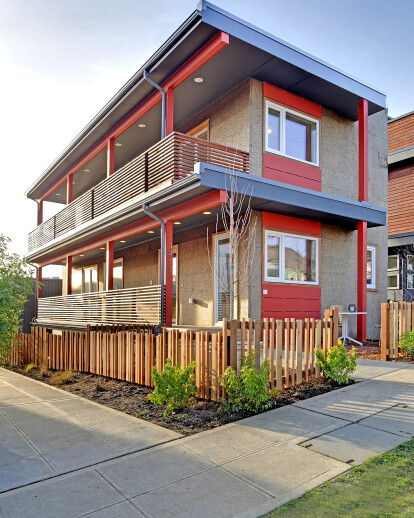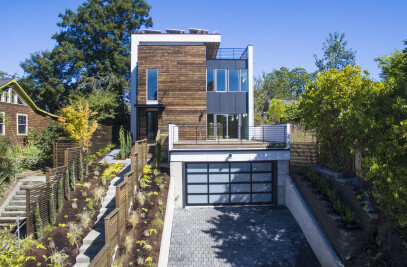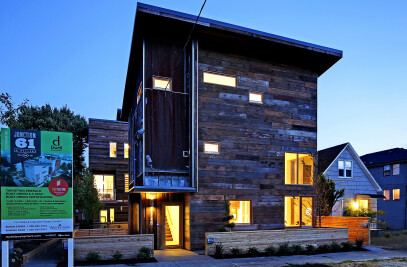These building materials are working hard for the environment. Cork, an unconventional building material in the United States, has been used in other parts of the world for centuries due to its long-term durability and carbon negative properties. The low maintenance 3-inch thick cork panels never have to be painted, stained or treated and provide additional insulation. As if that isn’t compelling enough, cork is also one of the only materials on earth that can be submerged in liquid for centuries without rotting, making it virtually immune to the Pacific Northwest’s damp climate. Environmentally conscious decisions were made throughout the material selection process, from the 85% recycled countertops from local supplier, NovuStone, to the 70% recycled porcelain tile in the bathrooms and sustainably harvested fir floors throughout the home. With the incorporation of recycled materials and sustainable technology, this net-zero speculative home is the future of residential development.
The vigorous combination of Passive House standards, innovative recycled materials and solar technology help this 1,711 square-foot home achieve net-zero energy usage. Passive House standards architecturally utilize passive solar gain to heat the home and create an airtight envelope to prevent heat from escaping through cracks and leaks in the structure. “I have never been crazy about the word Passive for this building standard,” says owner Anthony Maschmedt. "It is a very intentional design that allows the home to capture solar gain.” The Prosoco Cat-5 air and water resistive barrier combined with the high-performance European windows and doors create an airtight seal around the home. The heat recovery ventilation system exhausts stale air from inside the home while providing constant fresh air, ensuring a healthy and comfortable environment.

































